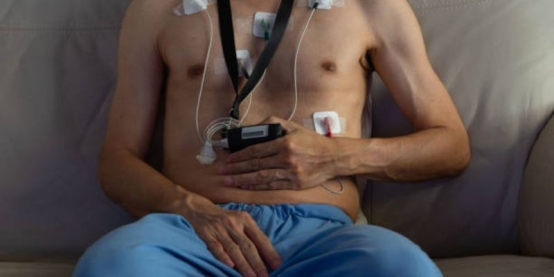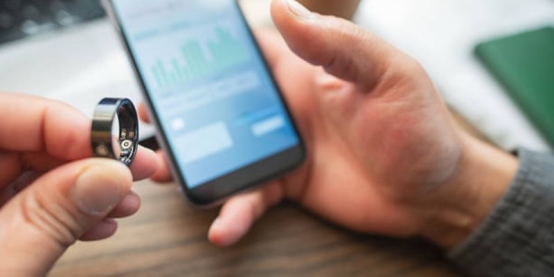The Pros and Cons of Wearable ECG Monitors
In recent years, personal health technology has exploded—with smartwatches, fitness bands, and medical wearables entering everyday life. Among these, wearable ECG monitors draw attention because they promise to turn the wrist (or patch, or ring) into a window into one’s heart.
An electrocardiogram (ECG) records the electrical impulses that make your heart beat, revealing patterns of rhythm, rate, and sometimes warning signs of trouble. The appeal of a wearable ECG monitor lies in convenience, early alerts to irregularities, and a sense of continuous oversight. But before adopting one as your daily companion, it’s important to grasp both the strengths and limitations.
What Exactly Is a Wearable ECG Monitor (and How It Works)
A traditional clinical ECG (often 12-lead) offers a multi-perspective electrical snapshot of the heart at rest, and is interpreted by trained professionals. A wearable ECG monitor is a consumer or medical device that captures one (or sometimes more) ECG leads remotely, over time. It trades breadth and clinical rigor for portability and continual monitoring.

Common Types and Form Factors
Wearable ECG monitors come in different forms:
Wristbands or smartwatches with built-in ECG sensors.
Adhesive patches (stick-on, under clothing).
Chest straps or bands (similar to heart rate monitors).
Rings or smart jewelry (less common).
Smart textiles (clothing with embedded electrodes).
Each form factor offers a trade-off in usability, comfort, and signal stability.
How It Works (in Plain Terms)
Sensors (electrodes) placed on the skin detect tiny voltage changes as the heart depolarizes and repolarizes. That raw electrical signal is digitized, filtered, and then either processed on-device or transmitted to an app or cloud service. Algorithms attempt to identify heart rate, rhythm irregularities, or waveform anomalies from that signal.
Factors That Influence Accuracy
Accuracy depends on multiple real-world variables:
Electrode contact quality (loose connection, motion, sweat)
Motion artifacts (movement noise can distort signals)
Skin properties (dry vs sweaty, hair, tattoos)
Battery power and signal fidelity
Algorithm quality and model training
Because wearable ECGs are simplified compared to full clinical systems, they may struggle under challenging conditions (e.g. during exercise or motion) where signal interference is high.
The Key Advantages of Wearable ECG Monitors
a. Continuous Heart Monitoring in Real Time
Unlike a one-off ECG in a clinic, wearable ECGs can (in many cases) record or sample heart rhythm over long stretches. That makes them ideal for spotting intermittent, asymptomatic conditions like paroxysmal atrial fibrillation (AFib) or irregular palpitations that may not show up during a brief exam.
b. Early Detection and Alerts for Abnormalities
Some devices include onboard algorithms that flag irregular patterns (e.g. AFib, tachycardia, bradycardia) and send alerts. That can prompt timely medical evaluation, especially for users who might otherwise ignore subtle symptoms.
c. Convenience and Accessibility
Wearable ECG monitors remove many logistical hurdles: no clinic appointment, wires, or technician needed. For older adults, remote or rural users, or those with mobility constraints, having ECG on the wrist or chest offers access to heart tracking without traveling.
d . Data Integration and Health Tracking
Wearables often sync with health apps, allowing users (or clinicians) to view long-term trends, export data, or integrate ECG info into broader health dashboards. In clinical studies, wearables are being used to support remote trials by capturing validated ECG data over days or weeks.

e. Motivation for Health Awareness
As users see heart rate variability, episodes of elevated heart rate, or irregular rhythms, some adopt healthier behaviors (e.g. more exercise, stress management). The feedback loop can motivate people to pay attention to their cardiovascular health more actively.
The Downsides and Limitations You Should Know
a. Accuracy Is Not Always Medical-Grade
Wearable ECGs often misread signals due to motion, poor contact, or noise. Studies show that their performance is strongest at rest, but degrades under exercise or in arrhythmia conditions. Automated algorithms in different smartwatch models vary notably in sensitivity and specificity in detecting AFib.
A meta-analysis comparing chest patches vs PPG smartwatches showed high pooled sensitivity and specificity (~96 %) in AFib detection — but with significant heterogeneity. Thus, false positives (flagging a problem where none exists) and false negatives (missing a real issue) are real risks.
b. Not a Replacement for Professional Diagnosis
Even devices cleared by regulatory bodies (FDA 510(k), CE marked) are not intended to replace in-clinic ECGs or cardiologist interpretation. Clearance means the device is “substantially equivalent” in safety and function, not perfect in all scenarios. Wearable monitors should be seen as supplemental tools, not definitive diagnostic tools.
c. Data Privacy and Security Concerns
Health data (ECG traces) are sensitive. When uploaded to apps or cloud servers, there is a risk of unauthorized access or breaches. Users should check:
Whether data is encrypted in transit and at rest
Who owns the data (user, company, third parties)
Whether export or sharing is permitted
Company privacy policies, audit history, and security practices
Without strong safeguards, data leakage or misuse is a real concern.
d. Cost and Subscription Models
Many wearable ECGs require paying for premium app features, cloud storage, or algorithm updates. The upfront cost (device + accessories) can be high. Recurring subscription fees may apply. Over time, those costs add up. Be skeptical of overpromising marketing claims (e.g. “diagnose your heart disease”).
e. Battery Life and Maintenance
Continuous monitoring consumes power. Frequent charging, firmware updates, recalibration, or sensor replacement may be needed. If the device is off for long stretches, data gaps may occur—defeating the continuity advantage.
Additionally, wearables must be durable, comfortable, and water/sweat resistant. Poor fit or wear and tear can degrade performance over time.

Who Benefits Most from Using a Wearable ECG Monitor
Wearable ECG monitors are not for everyone, but certain groups benefit more:
Individuals with known rhythm disorders (e.g. paroxysmal AFib, palpitations) who want to catch episodes.
High-risk individuals (family history of arrhythmia, hypertension, structural heart disease).
Athletes and fitness enthusiasts tracking how exertion and recovery affect their heart rhythm.
Patients under remote cardiac monitoring protocols, especially when clinicians request long-term ECG data.
Health-conscious users who want preventive insights, as long as they understand limitations.
These users can gain useful signals from wearable ECGs while complementing, not replacing, medical oversight.
Key Factors to Consider Before Buying One
Before choosing a wearable ECG monitor, check the following:
Regulatory Clearance (FDA, CE, etc.)
Clearance doesn’t guarantee perfect accuracy, but it ensures some level of clinical validation.
Sensor Type and Form Factor
Consider whether a wrist, patch, chest strap, ring, or textile device suits your lifestyle and signal stability needs.
Compatibility with Phone & Health Apps
Ensure your smartphone OS is compatible, that data sync works reliably, and that the interface is user-friendly.
Data Ownership & Export Options
Confirm you can export raw ECG files or summaries to share with doctors, or that data isn’t locked behind “paywalls.”
Battery Life, Durability & Comfort
Evaluate how long the device can record, how often it needs charging, and whether it is comfortable over long use.
Customer Support, Firmware Updates & Longevity
A reliable manufacturer offering updates, bug fixes, and support adds to the product’s lifespan and trust.
Are Wearable ECG Monitors Worth It?
A wearable ECG monitor is worthwhile as a complementary tool—especially for those at risk or already under cardiac care—but should be used with tempered expectations. It’s best paired with periodic clinical ECGs, cardiologist review, and medical context. Properly chosen and managed, it offers a compelling blend of visibility and safety—but not a silver bullet.